Apple II[edit]
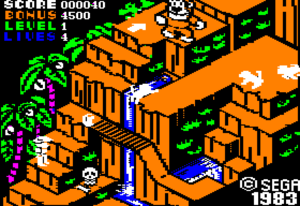

Developed and published by Sega in 1983.
Atari 2600[edit]
Developed by Beck-Tech and published by Sega in 1983. Contains only two stages. While the first stage faithfully retains an isometric look, the second stage does not.
-
Stage 1
-
Stage 2
-
Box
Atari 5200 & 400/800/XL/XE[edit]
Developed and published by Sega in 1983. Both the 5200 version and the home computer version are identical.
-
Screen
-
Atari computer box
-
Atari 5200 box
ColecoVision[edit]

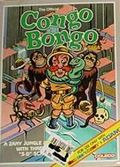
Developed by Sega and published by Coleco in 1984.
Commodore 64[edit]
Developed and published by Sega in 1983. Published by U.S. Gold for the European market.
-
Screen
-
American box
-
European box
Commodore VIC-20[edit]

Developed and published by Sega in 1983.
Intellivision[edit]
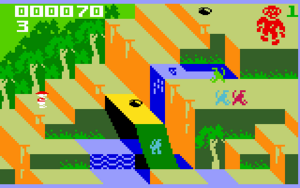
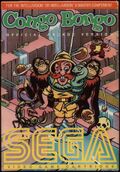
Developed and published by Sega in 1983. Like the Atari 2600 version, this version only contains two stages. Unlike the Atari 2600 version, the second stage is still isometric.
MSX[edit]
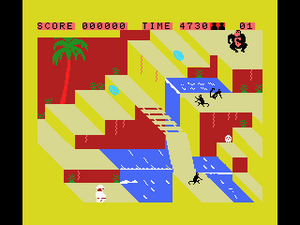
Developed and published in Japan by Sega in 1983.
PC[edit]

Developed and published by Sega in 1984. Certain limitations in the PC's graphics capabilities at the time actually lent a more outdoor atmosphere to the game, although Bongo looks much thinner.
PlayStation 2[edit]
Sega Ages Vol. 23, developed and published by Sega in late 2005, contained a collection of original and enhanced remakes of old Sega games, one of which was Congo Bongo. The pictures in the gallery below contain high resolution screenshots of the remake.
-
Remake stage 1
-
Remake stage 2
-
Sega Ages Vol. 23
Sega SG-1000[edit]
Developed and published by Sega in 1983. Ironically, Sega's own machine is the only console that does not render any stage in an isometric view. Even the Atari 2600 was programmed with this capability. There are only two stages.
-
Stage 1
-
Stage 2
-
Box
TI-99/4A[edit]
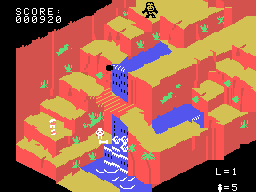
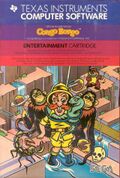
Developed and published by Sega in 1983.














